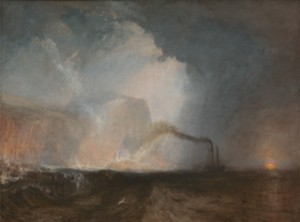In Reading Victorian Illustration, 1855-1875 (Ashgate 2012), Paul Goldman calls for an “enlargement” of illustration studies; “[t]he breadth and depth of what exists and remains relatively unexplored is staggering” (15). In response to Goldman’s call and the increasing critical interest in nineteenth-century illustration, brought about by better digital access and the digitization of obscure materials, we are devoting the summer 2015 special issue of Nineteenth-Century Gender Studies to the topic “Illustration and Gender.”
The mechanization of print during the nineteenth century led to the proliferation of illustrations that generated cultural and aesthetic ideals and changed social perceptions on issues of identity such as race, nationality, class, and gender. Illustrations filled Victorian print culture, and accompanied novels in both serial and book form. British illustrated newspapers (The Illustrated London News and Illustrated Police News), advertisements (Pear’s Soap), satirical publications (Punch and Fun), and children’s literature, all served to foreground visual culture, ultimately redefining it. The intersection of illustration studies and gender studies occurred not only within the illustrations that accompanied nineteenth-century texts but also outside of them. Although illustrators of the period were largely male, there were several skilled female illustrators including the well-known artists Kate Greenaway and Beatrix Potter, as well as the lesser known Amy Sawyer, Mabel Lucie Attwell, Elinor Darwin, and Edith Holden.
Illustrations are complex and never synesthetic versions of written texts. They adapt texts by including their own content and exist on the unstable ground between written and visual signs. Combining aspects of art history, cultural studies, media studies and print history, illustration studies are innately interdisciplinary and an increasingly influential subset of visual-culture studies. This special issues seeks to advance not only an understanding of the relationships between illustration studies and gender studies but also ways in which digitization, including such resources as NINEs, Google Books, and Internet Archive, have increased both awareness of and access to nineteenth-century illustrations. We welcome articles reflecting interdisciplinary approaches and international perspectives on illustration and gender studies. We hope to address a variety of possible topics including but not limited to:
Studies of female illustrators of the period
Critical histories of illustrators marked by gender and sexuality
Depictions of gender, race, sexuality, and/or class in illustrated literary works
Depictions of gender, race, sexuality, and/or class in illustrated advertisements
Illustration and gender in periodical publications
Illustration and gender in the novel
Illustration and gender in poetry
Illustration and gender in the fin-de-siècle
The influence of scientific theories and discoveries (phrenology, evolution, ethnography) on illustration and gender
Avenues opened up by the digital humanities for visualizing gender in Victorian culture.
Please send articles of 5-8,000 words to both the guest editors, by March 15, 2015 (earlier submission is encouraged). Adhere to MLA style, using endnotes rather than footnotes.
Please include a coversheet that includes your contact information and a short (100-150 word) bio with your article submission. Please contain all identifying information to the coversheet.
Feel free contact us at the email addresses listed below with any questions or concerns.
We look forward to reading your submissions!
Kate Holterhoff, Carnegie Mellon University, kholterh@andrew.cmu.edu
Dr. Nicole Lobdell, Georgia Institute of Technology, nicole.lobdell@lmc.gatech.edu


